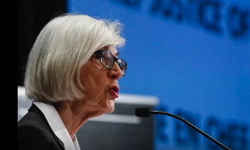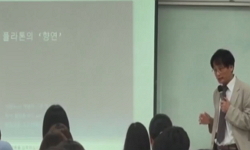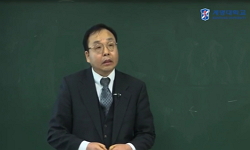Equal pay for equal work regardless of gender has been a main demand in the field of gender equality, and continues to be so. In the early years of the People’s Republic of China(PRC), the Chinese Communist Party(CCP) prioritized gender equality, im...
http://chineseinput.net/에서 pinyin(병음)방식으로 중국어를 변환할 수 있습니다.
변환된 중국어를 복사하여 사용하시면 됩니다.
- 中文 을 입력하시려면 zhongwen을 입력하시고 space를누르시면됩니다.
- 北京 을 입력하시려면 beijing을 입력하시고 space를 누르시면 됩니다.

성평등 노동, 원칙의 당위성과 실천의 곤혹 — 중화인민공화국 초기 성별 동일노동 동일임금의 실천을 중심으로 = Gender Equality in Labor,Justification of Principle and Embarrassment in Implementation: A Focus on the Implementation of Equal Pay for Equal Work Regardless of Gender in the Early PRC
한글로보기https://www.riss.kr/link?id=A109226805
-
저자
박석진 (한국외국어대학교 융합인재학부)
- 발행기관
- 학술지명
- 권호사항
-
발행연도
2024
-
작성언어
Korean
-
주제어
중국공산당 ; 동일노동 동일임금 ; 젠더평등 ; 농업합작화운동 ; 신기란 ; 성차별 ; 중화인민공화국 ; CCP ; equal pay for equal work ; gender equality ; agricultural collectivization movement ; Shenjilan ; gender discrimination ; PRC
-
등재정보
KCI등재
-
자료형태
학술저널
-
수록면
91-135(45쪽)
- DOI식별코드
- 제공처
-
0
상세조회 -
0
다운로드
부가정보
다국어 초록 (Multilingual Abstract)
While the principle of the equal pay for equal work relatively received support easily, its practical implementation faced numerous complexities. These provoked numerous arguments such as defining of the equal (value) work as the precondition for the equal pay, perspectives on biological differences in physical labor, issues of gender division of labor, the dual burden of domestic and social labor on women, the valuation of domestic labor, and the strategies of gender equality and difference etc.
This paper researched the history of the CCP’s policy on equal pay for equal work regardless of gender from its inception, and then focused on its implementations each of the early PRC’s industrial and agricultural sectors. Although the CCP championed equal pay for equal work from the beginning, influenced by international women’s movement and international socialist movement, however it was not practically realized until the early 1950s with the agricultural collectivization movement. In other words, in the industrial sector in the pre-establishment and early years of the PRC, equal pay for equal work largely remained just as a slogan and principle rather than being widely practiced. It was not until 1951, with the implementation of the agricultural collectivization movement, that it began to be put into practice. The implementation and institutionalization of equal pay for equal work mirrored the developments in the agricultural collectivization movement, indicating that this gender equality policy was significantly driven by state needs and initiatives. However, the active participation and struggle of women, who responded to state demands and became aware of their own rights, should not be overlooked.
A representative case of the implementation of equal pay for equal work regardless of gender in China is the “SHENjilan Case”. In China, SHENjilan is revered as a “pioneer and heroin” of the implementation of equal pay for equal work. However, it can also be said that her case is “discovered case and promoted heroin” by the state. The CCP government discovered this case at the LIshunda Producers’ Cooperative, which was already receiving national attention, to mobilize female labor. They aimed to promote it nationwide through the ‘People’s Daily’. This analysis does not imply that the “SHENjilan Case” was manipulated by the CCP, nor does it diminish the efforts of the LIshunda Producers’ Cooperative and SHENjilan. However, recognizing the state’s leading role in this whole process is crucial for understanding China’s historical context at this time.
The implementation process was fraught with challenges. The practical meaning of “equal work” was ambiguous, leading to numerous complex situations and debates. The dual burden of domestic and social labor on women often caused domestic discords. These debates led to historic and bold experiments during the People’s Commune period to socialize domestic labor, and this issue persists unresolved to this day. What lessons can we draw from this history?
Equal pay for equal work regardless of gender has been a main demand in the field of gender equality, and continues to be so. In the early years of the People’s Republic of China(PRC), the Chinese Communist Party(CCP) prioritized gender equality, implemented policies in the labor sector such as equal pay for equal work and protection of female workers. These policies are considered as meaningful efforts towards egalitarianism.
While the principle of the equal pay for equal work relatively received support easily, its practical implementation faced numerous complexities. These provoked numerous arguments such as defining of the equal (value) work as the precondition for the equal pay, perspectives on biological differences in physical labor, issues of gender division of labor, the dual burden of domestic and social labor on women, the valuation of domestic labor, and the strategies of gender equality and difference etc.
This paper researched the history of the CCP’s policy on equal pay for equal work regardless of gender from its inception, and then focused on its implementations each of the early PRC’s industrial and agricultural sectors. Although the CCP championed equal pay for equal work from the beginning, influenced by international women’s movement and international socialist movement, however it was not practically realized until the early 1950s with the agricultural collectivization movement. In other words, in the industrial sector in the pre-establishment and early years of the PRC, equal pay for equal work largely remained just as a slogan and principle rather than being widely practiced. It was not until 1951, with the implementation of the agricultural collectivization movement, that it began to be put into practice. The implementation and institutionalization of equal pay for equal work mirrored the developments in the agricultural collectivization movement, indicating that this gender equality policy was significantly driven by state needs and initiatives. However, the active participation and struggle of women, who responded to state demands and became aware of their own rights, should not be overlooked.
A representative case of the implementation of equal pay for equal work regardless of gender in China is the “SHENjilan Case”. In China, SHENjilan is revered as a “pioneer and heroin” of the implementation of equal pay for equal work. However, it can also be said that her case is “discovered case and promoted heroin” by the state. The CCP government discovered this case at the LIshunda Producers’ Cooperative, which was already receiving national attention, to mobilize female labor. They aimed to promote it nationwide through the ‘People’s Daily’. This analysis does not imply that the “SHENjilan Case” was manipulated by the CCP, nor does it diminish the efforts of the LIshunda Producers’ Cooperative and SHENjilan. However, recognizing the state’s leading role in this whole process is crucial for understanding China’s historical context at this time.
The implementation process was fraught with challenges. The practical meaning of “equal work” was ambiguous, leading to numerous complex situations and debates. The dual burden of domestic and social labor on women often caused domestic discords. These debates led to historic and bold experiments during the People’s Commune period to socialize domestic labor, and this issue persists unresolved to this day. What lessons can we draw from this history?
동일학술지(권/호) 다른 논문
-
국가-민족에 대한 균열 시도와 지점 찾기 — 쑨핀(孫頻)의 「청동으로 된 몸(青銅之身)」과 하이난(海男)의 『신체 제사(身體祭)』를 예로
- 한국중국현대문학학회
- 김서은
- 2024
- KCI등재
-
- 한국중국현대문학학회
- 장수지
- 2024
- KCI등재
-
1980년대 시장화개혁과 중국 여성 — ‘돌봄’과 ‘노동’ 담론을 중심으로
- 한국중국현대문학학회
- 김미란
- 2024
- KCI등재
-
신시대 중국 고등어문교육과 교과서에 나타난 문화 정체성 내재화 연구 — 2004년 판과 2019년 판(2020년 개정)의 비교를 중심으로
- 한국중국현대문학학회
- 한담
- 2024
- KCI등재




 KISS
KISS






